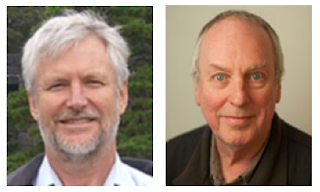In 2014, following concerns over the poor quality of biomedical research, The Lancet published a series of 5 articles analysing the scope of the problem and proposing solutions and as a result of this Reward Alliance was born, a platform that aims to defend the value of the research, from which I have extracted the scandalous figure of 85% and, according to Paul Glasziou and Iain Chalmers, two of the leaders of the movement, the volume of money squandered by biomedical research could reach 170 billion dollars annually, an amount higher than Hungary's gross domestic product. The two authors, who already predicted this figure in 2009, argue that this amount comes from an accumulation of up to three times 50%.
The first (almost) 50%: the lack of methodological rigour
It would be desirable that when a new investigation is going to start, before doing a thorough review of everything that has been previously investigated on that subject, in addition to sticking to a comparable methodology and an impeccable elaboration, but it seems that, in this aspect, things just don’t work. A team of researchers analyzed 1,286 clinical trials included in 205 meta-analyzes of the Cochrane reviews and concluded that the waste of research due to avoidable methodological gaps was 42%.
The second 50%: the non-publication
In the United States, another review of 635 officially registered clinical trials funded by INH found that only 294 (46%) had been published in an indexed journal in a period of 30 months from the end of the project, a figure that is also repeated in other countries. The non-publication of clinical trials (especially the inconclusive ones) is a huge waste of time, effort and money, as well as a source of biases towards the optimism of future revisions.
The third 50%: the publication of poor quality
Research papers should be published in a sufficiently clear, complete and precise manner, in order to get the interested people to interpret them properly. Unfortunately, another study concludes that more than half of research reports describe the projects sporadically, to the extent that they don't allow replication. In addition, it has been found that many of them have at least one final indicator changed, or subsequently introduced.
Where does the overall figure of 85% come from?
According to the sources cited above, a little more than half of the studies would filter the quality of method and execution, of these, half would not be published and of those who did, only half would be presented in a transparent and understandable report so you get to 12.5-15% of quality and effective studies. That is to say, that their well contrasted information would arrive unequivocally to its addressee, for which, the rest, between 85 and 87.5%, would be wasted studies.
What does the Reward Alliance propose to remake the situation?
The Reward Alliance says that part of the research funds should be used to rescue part of the wasteful clinical trials, except for those that don’t have enough methodological rigour in origin. This would be done by introducing repairs to poor editorial quality aspects, in addition to promoting the publication of all studies, as advocated by the "All Trials Initiative", through a universal and independent database, which would facilitate quality access to research findings. Consider that, right now, documentary and editorial sources, scattered, and many of them paid, offer a very poor service. There is an analysis that considers that each year that passes the end of a project the probability of losing the reference increases by 7%.
With the data in hand, 50% of the research doesn’t have sufficient methodological rigour, and this requires a thorough rethinking of both the financing model and quality controls. Now, according to Reward Alliance, of the other 50%, that of serious research, almost everything could be recovered only with better editorial policies and quality open databases. Doing nothing implies that, between one thing and another, only 15% of what is investigated is used, the rest is wasted.
Jordi Varela
Editor



I'm 40 years old female I tested genital herpes (HSV1-2) positive in 2002. I was having bad outbreaks. EXTREMELY PAINFUL. I have try different kinds of drugs and treatment by the medical doctors all to know was avail. Six months ago I was desperately online searching for a helpful remedies for genital herpes (HSV1-2) cure, which i come across some helpful remedies on how Dr OYAGU have help so many people in curing genital herpes (HSV1-2) with the help of herbal treatment because I too believe there is someone somewhere in the world who can cure herpes completely. At of the past 2 months, however, I've been following his herpes protocol Via oyaguherbalhome@gmail.com or +2348101755322 and it stopped all outbreaks completely! To my greatest surprise I was cured completely by following the protocol of his herbal medicine . Don't be discouraged by the medical doctors. There is a cure for HSV with the help of herbs and roots by a herbalist Dr call Dr OYAGU he is so kind and truthful with his herbal treatment, kindly contact him for more information Via oyaguherbalhome@gmail.com or WhatsApp DR on +2348101755322 you will be lucky as i am today
ReplyDelete